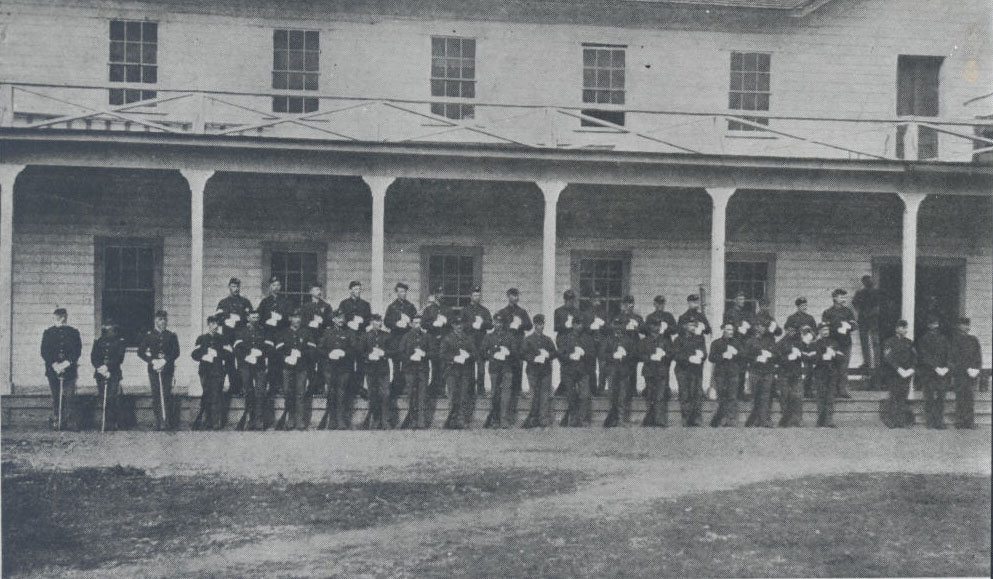Overview
Oregonians had enjoyed statehood for only two years when the Confederacy fired on Fort Sumpter on April 12, 1861. The state was already divided politically when it voted in its first presidential election in 1860. Abraham Lincoln barely edged out his opponents, benefitting from a split in the Democratic Party and the consolidated support of Republicans, who were in the minority in Oregon. That divide was deepened during the Civil War, as Oregonians grappled with their own attitudes toward slavery, emancipation, race, and secession. The various newspapers, as instruments of political parties, were monitored for pro or anti-Southern sympathies. Those which supported the South were suppressed, including the Portland Daily News and the Eugene Herald. Black Oregonians watched the war carefully and celebrated the Emancipation Proclamation—an event acknowledged each year for many years after.
The Oregonians perhaps most affected by the Civil War were those who had been confined to the newly formed Indian reservations. The regular army units based on the West Coast were sent east and replaced by volunteer units, whose primary purpose was to facilitate white settlement and suppress the Indian population. The land and resources in the West were critical to the Union’s war strategy, so the building of roads and railways—with free or cheap land waiting for overlanders—helped secure the region away from the Confederacy. Treaties had largely secured tribal lands for newcomers, but many Native people resisted relocation and resented illegal squatting on reservation lands by white miners and farmers. The volunteers closely surveilled Native people, expecting violence at any moment. There was little conflict; still, the army built several forts around the state and would ride out in force to Native communities at any sign of discord. Those forts came into heavy use near the end of the Civil War in 1864 when the U.S. Army and the “Snake Indians,” comprised of Northern Paiute, Bannock, and Western Shoshone, entered into one of the deadliest Indian wars in the West. For the next several decades, Indian wars occupied the regular armed forces, regarrisoned in the West after the end of the Civil War.
Content Standards
- 6.3 Examine the origins, purposes, and impact of constitutions, laws, treaties, and international agreements.
- 6.4 Recognize historical and contemporary means of changing societies and promoting the common good.
- 6.18 Evaluate the impact of systems of colonial cultures on the indigenous peoples, such as termination, sovereignty, and treaties.
- 6.21 Identify issues related to historical events to recognize power, authority, and governance as it relates to systems of oppression and its impact on ethnic and religious groups and other traditionally marginalized groups in the modern era (bias and injustice, discrimination, stereotypes).
- 6.28 Construct arguments using claims and evidence from multiple sources, while acknowledging the strengths and limitations of these arguments.
- 7.1 Describe the role of citizens in governments.
- 7.19 Determine and explain the interdependence of people around the world during significant eras or events.
- 7.20 Determine and explain the historical context of key people, cultures, products, events, and ideas over time including the examination of different perspectives from indigenous people, ethnic and religious groups and other traditionally marginalized groups throughout the Eastern Hemisphere.
- 8.7 Analyze the expanding eligibility of citizenship in the continuing struggle for the expansion of rights for ethnic and traditionally marginalized groups.
- 8.23 Evaluate the continuity and change over the course of United States history by analyzing the key people and events from the 1780s through Reconstruction.
- 8.24 Examine the cause and effect of social, political, and economic factors that motivated westward expansion, invasion of indigenous peoples, institutions, and the resulting impacts.
- 8.29 Use and interpret relevant primary and secondary sources pertaining to U.S. History from multiple perspectives.
- HS.1 Analyze the impact of constitutional amendments on groups, individuals, institutions, national order.
- HS.5 Evaluate the relationships among governments at the local, state, tribal, national, and global levels.
- HS.7 Analyze political parties, interest and community groups, and mass media and how they influence the beliefs and behaviors of individuals, and local, state, and national constituencies.
- HS.55 Analyze the complexity of the interaction of multiple perspectives to investigate causes and effects of significant events in the development of world, U.S., and Oregon history.
- HS.60 Analyze the history, culture, tribal sovereignty, and historical and current issues of the American Indian/Alaska Native/Native Hawaiian in Oregon and the United States.
- HS.65 Identify and analyze the nature of systemic oppression on ethnic and religious groups, as well as other traditionally marginalized groups, in the pursuit of justice and equality in Oregon, the United States and the world.
- HS.67 Evaluate historical sources for perspective, limitations, accuracy, and historical context.
- HS.68 Select and analyze historical information, including contradictory evidence, from a variety of primary and secondary sources to support or reject a claim.
- HS.69 Create and defend a historical argument utilizing primary and secondary sources as evidence.
Additional Sources
Lalande, Jeff. “‘Dixie’ of the Pacific Northwest: Southern Oregon’s Civil War.” Oregon Historical Quarterly 100, 1999: 33–72.
Edwards, Thomas G. “Six Oregon Leaders and the Far-Reaching Impact of America’s Civil War.” Oregon Historical Quarterly 100, 1999: 8–32.
Johannsen, Robert W. Frontier Politics and the Sectional Conflict: The Pacific Northwest on the Eve of the Civil War. Seattle, Wash., 1955.
Richard, K. Keith. “Unwelcome Settlers: Black and Mulatto Oregon Pioneers.” Oregon Historical Quarterly 82, 1983: 29-56, 173-191.
McLagan, Elizabeth. A Peculiar Paradise: A History of Blacks in Oregon, 1788-1940. Portland, Oreg., 1980.
Johnannsen, Robert W. “The Oregon Legislature and the Fourteenth Amendment.” Oregon Historical Quarterly 51, 1950: 3-12.
Taylor, Quintard. “Slaves and Free Men: Blacks in the Oregon County, 1840-1860.” Oregon Historical Quarterly 83, 1982: 153-170.
Cite
The OE. "Symptoms of hostilities": the Civil War in Oregon. 2020. Retrieved from The Oregon Encyclopedia, http://oregonhist-oep-dev.azurewebsites.net/packets/2. (Accessed October 26, 2025.)Teacher Guide
Document-based Questions

